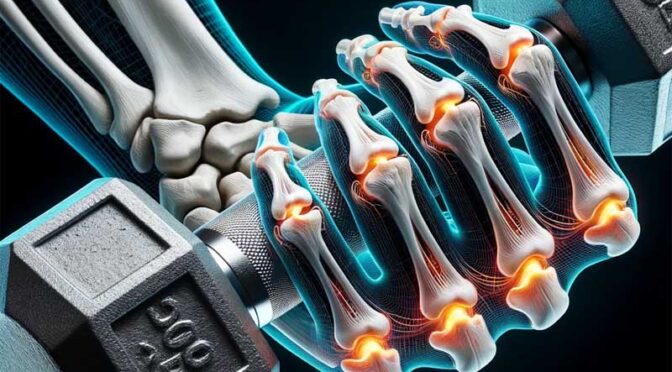This article draws its insights from a video titled “How Your Bones Change With Exercise” by the Institute of Human Anatomy. The video reveals the fascinating adaptability of bones, which can change in density, shape, and internal architecture in response to exercise.
Contents
- The Lessons from Space Exploration
- The Anatomy of Bone
- The Role of Exercise
- Types of Exercises for Bone Health
- The Cellular Dynamics of Bone Remodeling
- Estrogen and Bone Density
- Fascinating Conclusions
- The video
The Lessons from Space Exploration
Astronauts returning from space missions showed a decrease in bone density by as much as 20%, despite being in prime physical condition. This phenomenon taught us that bones are not static; they adapt to the stresses placed upon them. In a zero-gravity environment, the lack of stress leads to a decrease in bone density, emphasizing the role of exercise in maintaining and even increasing it.
The Anatomy of Bone
Bones consist of two types of tissue: compact bone and spongy bone. Compact bone forms the dense outer layer, while spongy bone lies beneath it. Spongy bone contains tiny beams called trabeculae, which align themselves along the lines of stress that the bones experience. This alignment is not random but is a dynamic adaptation to the forces exerted on the bones.
The Role of Exercise
Exercise influences bone by subjecting it to both compressive and tensile forces. These forces stimulate two key components in bone tissue: hydroxyapatite, an inorganic substance providing compressive strength, and collagen, an organic substance offering tensile strength. Consistency in exercise is crucial for long-term adaptations in bone density and architecture.
Types of Exercises for Bone Health
Exercises that apply both compressive and tensile forces are beneficial for bone health. Running, walking, and jumping are examples of activities that apply compressive forces. Resistance training, like pull-ups or biceps curls, applies tensile forces. Interestingly, many exercises, such as running or weight training, apply both types of forces, making them particularly effective for stimulating bone adaptation.
The Cellular Dynamics of Bone Remodeling
Bones are constantly being remodeled by two types of cells: osteoblasts, which build up new bone tissue, and osteoclasts, which break down old bone tissue. When osteoblast activity outpaces that of osteoclasts, bone density increases. Conversely, a lack of physical activity can lead to a decrease in bone density, as osteoclast activity may outpace that of osteoblasts.
Estrogen and Bone Density
Estrogen plays a role in inhibiting the activity of osteoclasts, which has implications for bone density, particularly in women during certain life stages when estrogen levels may fluctuate. This topic warrants further exploration in future discussions.
Fascinating Conclusions
The adaptability of bones to exercise is nothing short of remarkable. From the lessons learned in space exploration to the cellular dynamics of bone remodeling, it’s clear that our skeletal system is a dynamic, responsive entity. Exercise serves not just to build muscle or burn fat but to fundamentally alter the density, shape, and internal architecture of our bones. The role of substances like hydroxyapatite and collagen in these processes adds another layer of complexity and wonder. Even hormonal factors like estrogen come into play, offering a glimpse into future avenues of research. Truly, the bones are not mere scaffolds but active participants in the body’s ongoing adaptation to its environment.

